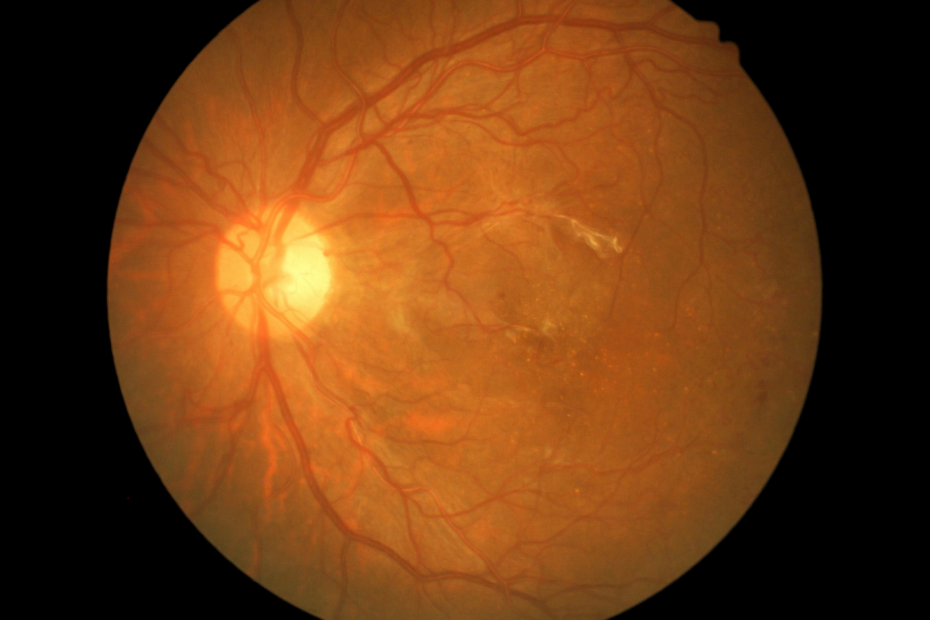Introduction
Causes
Diabetic retinopathy is caused by damage to blood vessels of the retina. The retina is the layer of tissue at the back of the inner eye. It changes light and images that enter the eye into nerve signals that are sent to the brain. There are two types, or stages of diabetic retinopathy: Non-proliferative type develops first Proliferative is the more advanced and severe form of the disease Having more severe diabetes for a longer period of time increases the chance of getting retinopathy.
Retinopathy is also more likely to occur earlier and be more severe if diabetes has been poorly controlled. Almost everyone who has had diabetes for more than 30 years will show signs of diabetic retinopathy.
Symptoms
Most often, diabetic retinopathy has no symptoms until the damage to your eye is severe. In some cases, there may be certain symptoms like:
Blurred vision and slow vision loss over time Floaters (dark spots floating in front of the eyes) Shadows or missing areas of vision Trouble seeing at night Many people with early diabetic retinopathy have no symptoms before major bleeding occurs in the eye. This is why everyone with diabetes should have regular eye exams.
Diagnosis
The ophthalmologist can diagnose diabetic retinopathy by dilating the pupils with eye drops and then carefully examining the retina. A retinal photography or fluorescein angiography test may also be used.
Treatment
People with the earlier form of diabetic retinopathy may not need treatment. However, they should be closely followed by an eye doctor. Treatment usually does not reverse damage that has already occurred. However, it can help keep the disease from getting worse. Once there are new blood vessels growing in the retina (neovascularization) or there is macular edema, treatment is usually needed. Treatment is done with laser photo-coagulation or in advanced stages with surgery. Injection of Triamcinolone a steroid in the eye is given to reduce macular oedema. Also anti- VEGF factors are given to regress new blood vessels.
Laser eye surgery creates small burns in the retina where there are abnormal blood vessels. This process is called photocoagulation. It is used to keep vessels from leaking or to get rid of abnormal, fragile vessels. Focal laser photocoagulation is used to treat macular edema. Scatter laser treatment or panretinal photocoagulation treats a large area of your retina. Often two or more sessions are needed. A surgical procedure called vitrectomy is used when there is bleeding (hemorrhage) into the eye. It may also be used to repair retinal detachment. Drugs that prevent abnormal blood vessels from growing, and corticosteroids injected into the eyeball are given if considered necessary.
Prevention
A good control over your blood sugar levels, blood pressure and cholesterol levels go a long way in delaying the eventual onset of diabetic retinopathy. Quitting smoking also helps.
Complications If Left Untreated
- Cataracts
- Glaucoma – increased pressure in the eye that can lead to blindness
- Macular edema – if fluid leaks into the area of the retina that provides sharp vision straight in front of you, your vision becomes more blurry.
- Retinal detachment – scarring may cause part of the retina to pull away from the back of your eyeball.
Keep good control of blood sugar and blood pressure.
Treatments can reduce vision loss but do not cure diabetic retinopathy or reverse the changes that have already occurred. Once proliferative retinopathy occurs, there is always a risk for bleeding. You will need to be monitored regularly, and may need more treatment.
If you are beginning a new exercise program or are planning to get pregnant, have your eyes examined. Avoid resistance or high-impact exercises, which can strain already weakened blood vessels in the eyes.
If you are at low risk, you may need follow-up exams only every 2 – 3 years. The eye exam should include dilation to check for signs of retinal disease (retinopathy).
